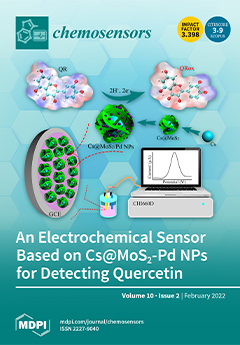A large amount of power equipment works in closed or semi-closed environments for a long time. Carbon monoxide (CO) is the most prevalent discharge gas following a fault in the components. Based on the density functional theory of first principles, the adsorption behavior
[...] Read more.
A large amount of power equipment works in closed or semi-closed environments for a long time. Carbon monoxide (CO) is the most prevalent discharge gas following a fault in the components. Based on the density functional theory of first principles, the adsorption behavior of CO gas molecules on intrinsic, Ag-doped and Au-doped hafnium disulfide (HfS
2) monolayers was systematically studied at the atomic scale. Firstly, the intrinsic HfS
2 monolayer, Ag-doped HfS
2 (Ag-HfS
2) monolayer and Au-doped HfS
2 (Au-HfS
2) monolayer, with different doping sites, were created. The structural stability, dopant charge transfer, substrate conductivity and energy band structure of different doping sites of the Ag-HfS
2 and Au-HfS
2 monolayer structures were calculated. The most stable doping structure was selected with which to obtain the best performance on the subsequent gas adsorption test. Then, the CO adsorption models of intrinsic HfS
2, Ag-HfS
2 and Au-HfS
2 were constructed and geometrically optimized. The results show that the adsorption energy of the Ag-HfS
2 monolayer for CO gas is −0.815 eV, which has good detection sensitivity and adsorption performance. The adsorption energy of CO on the Au-HfS
2 monolayer is 2.142 eV, the adsorption cannot react spontaneously, and the detection sensitivity is low. The research content of this paper provides a theoretical basis for the design and research of gas sensing materials based on HfS
2, promoting the development and application of HfS
2 in gas sensing and other fields.
Full article





